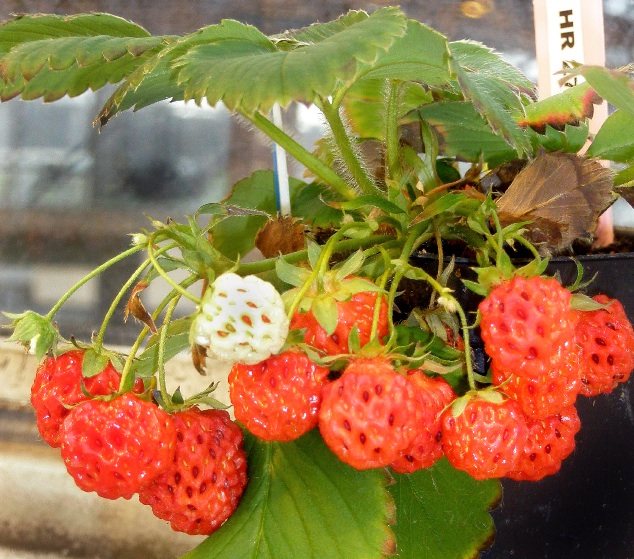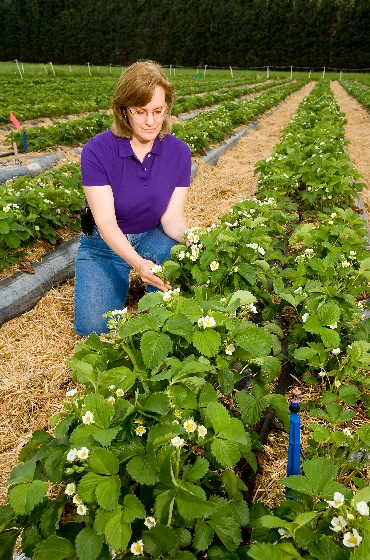
Features
Production
Research
Strawberry gender decided by two genes
August 11, 2009 By USDA Agricultural Research Service
 August 4, 2009 – New research by an Agricultural Research Service (ARS)
August 4, 2009 – New research by an Agricultural Research Service (ARS)
scientist and her cooperators found gender in strawberries is
determined by two genes, not one as previously believed.
August 4, 2009 – New research by an Agricultural Research Service (ARS) scientist and her cooperators found gender in strawberries is determined by two genes, not one as previously believed.
Strawberry plants possess one of three reproductive functions. Male plants bear flowers that produce pollen but cannot set fruit. Female plants produce fruit if their flowers are pollinated, but cannot produce their own pollen. Hermaphrodites contain both male and female functions that enable them to flower, self-pollinate and bear fruit. Neuters, which look like male strawberry plants, can also exist but do not posses reproductive functions.
 |
|
| In a research field at Beltsville, Maryland, geneticist Kim Lewers checks for pollen production in strawberry plants. |
ARS plant geneticist Kim Lewers, and plant evolutionary ecologist Tia-Lynn Ashman and postdoctoral candidate Rachel Spigler – both with the University of Pittsburgh – sought to determine the genetic control of reproductive dysfunction in strawberries. Reproductive dysfunction plays an important role in fruit yield and quality. Lewers works in the ARS Genetic Improvement of Fruits and Vegetables Laboratory in Beltsville, Md.
 |
|
| Plants without pollen that can set fruit if pollinated by another plant are female. |
To better understand the inheritance of dysfunction, the scientists crossbred the wild strawberry Fragaria virginiana to create 200 offspring plants. Mapping the offspring’s genes, they created the first reproducible molecular-marker map of the wild Virginia strawberry, often used by strawberry breeders for resistance to diseases that plague the commercially grown strawberries available to consumers. The DNA markers on this map will help transfer important traits like disease resistance.
The map also shows that recombination – a process in which chromosomes cross over and produce combinations of genes not found in the parents – occurs. The presence of neuters among the offspring support the findings, further confirming that two genes control gender expression. F. virginiana, according to Lewers, represents a very early stage in the evolution of chromosomes controlling gender in plants.
The findings, published in the scientific journal Heredity, will help strawberry breeders determine how many seedlings they must grow from crosses of male and female parents in order to identify at least some hermaphroditic offspring that contain desired traits. This could bring breeders one step closer to developing new strawberry varieties with higher yields, disease resistance and other qualities to benefit consumers.
Read more about this research in the August 2009 issue of Agricultural Research magazine, available online at: http://www.ars.usda.gov/is/AR/archive/aug09/strawberries0809.htm.
Print this page